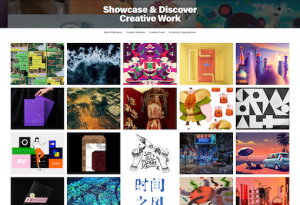5 great examples of brand communities
Need some inspiration for using online communities to boost your brand? Feast your eyes on these…

Updated on 5th January 2021.
The term ‘brand community’ was first suggested by Albert Muniz, Jr. and Thomas O’Guinn back in 2001. The concept being that brands build not only a community of occasional customers, but one of engaged content followers and product ambassadors. These are likely to create a buzz around your brand and your latest releases and content without any further incentive from yourself.
In 2020, we wrote about the benefits of an online community and how the coronavirus pandemic has made them more vital than ever before. With so many of us working remotely and finding ourselves at risk of becoming isolated, being able to share knowledge and interact online is crucial. The same can be said of brands, who have had to find fresh ways to engage with their audience in response to the challenges of the last 12 months.
Community marketing has changed over the years, something we’ve been talking about as far back as 2019. In the past, community marketing was seen as synonymous with social media or purely about customer communities and customer service. We see it more as a combination of content marketing and thought leadership, but with the key added element of building relationships with people, rather than with a brand.
Building these sorts of relationships takes time, but the benefits are powerful. Brands gain a dedicated customer base of engaged individuals to discuss ideas and share content with (and who will, in their turn, engage with new potential customers). And their community gains valuable content, insight and personal interaction from a brand they trust.
But how does that work in practice? Which brands are already doing this well? Here are some examples from both B2B and B2C companies.
1. Adobe’s Behance
In 2012, Adobe acquired existing online design community platform, Behance. Behance is a network for creative people and was (and still is) highly-regarded in the design community. It allows people around the world to showcase their own work and discover the creative work of others. So why did Adobe decide to acquire it (for $150m, no less)?

Adobe makes a considerable profit from selling creative software like Photoshop and Acrobat, and increasingly renting it via Creative Cloud. Therefore, enabling a network like Behance, puts it at the centre of the creative community, bringing together everything from its essential software to professional socializing.
It also allows Adobe to bring community features to the creative cloud, creating myriad two-way links between its community and the products that it offers.
2. Spotify Community
This won’t shock you, I’m sure, but Apple sell A LOT of smart devices and each one ships with Apple Music already installed.
Yet Spotify has roughly twice as many paying subscribers to a very similar service. How? Well, Spotify have a young, engaged and dedicated fan base who will stand by them forever (see photo!).

Spotify’s community solves a number of business challenges, from customer support to enhancing brand value. It’s a place for music lovers to discuss the industry, suggest ideas to Spotify (in terms of platform improvements), and get user support from the company.
It also enables Spotify’s Rock Star program, which gives users the chance to write helpful posts and answer questions from other users in order to earn points. They can spend the points on merchandise, Spotify Premium and even gig tickets. A nice incentive to encourage user generated content.
3. The Oystercatchers Club (powered by Zapnito)
In their own words, the “community of CEOs and CMOs regularly meet the leaders of some of the best-known agencies to challenge industry norms, discuss best practice, inspire curious minds, and transform the industry at our exclusive events throughout the year.”
The purpose of the digital community for its members is to build connections throughout the year even when they are not physically attending the various club events. The benefit to agencies and brands is the ability to showcase campaigns and deliver further value for the collateral they produce. See the platform’s ‘Latest agency work and news‘ channel for the latest content from the biggest industry names.
Not only can high profile experts network within their field and connect with other like-minded marketing and advertising enthusiasts here, so can you or I as club members. It’s like being invited to the most exclusive party in the business, with the literature and multimedia content to go with it! From the expert directories, to event rooms such as 2019’s Festival of Marketing – the Oystercatchers Club have cultivated a deeply engaging community for one of the busiest and most evocative industries around.

4. PlayStation Plus Community
The PlayStation Plus community forms part of the PlayStation Network (PSN), which is a digital media entertainment service provided by Sony. PSN was originally intended solely for the PlayStation video game consoles, but its success has led to it launching on smartphones and other smart devices too
Members of the community can connect with other players around the world and play online games together in real time. As a big Fifa fan myself, it’s a community I’ve been involved with from the inside.
Priding itself as “the world’s biggest community of online gamers”, PlayStation Plus provides forum functionality where players discuss games and consoles. This not only enables customers to have their say about exciting gameplay or relevant updates and improvements (which game creators and Sony can learn from) but also helps users who are having trouble using the system (as illustrated below).
The content also works to attract new customers through conversations around ‘best buys’ and new releases.

5. Kinaxis Knowledge Network
A great example of an expert community, supply chain specialists Kinaxis run a closed community that delivers in depth knowledge and insight from both the Kinaxis internal experts and their customers.
Every Kinaxis customer and partner also has their own private space in which to collaborate and all registered users have the ability to join other groups of like-minded peers for discussion and networking.
For Kinaxis, it serves multiple purposes: providing product knowledge to customers, showcasing their insight and expertise to a broader audience, facilitating networking between current and potential customers, and delivering support on their products.
